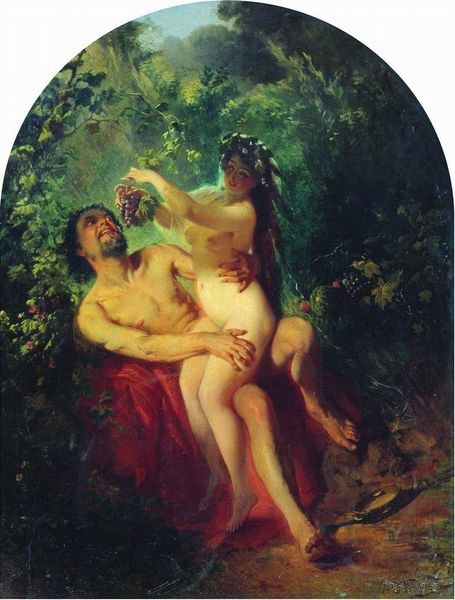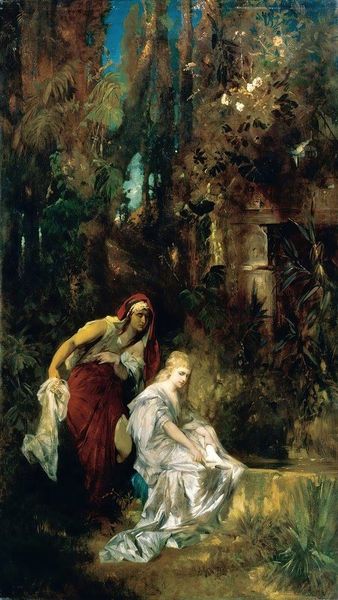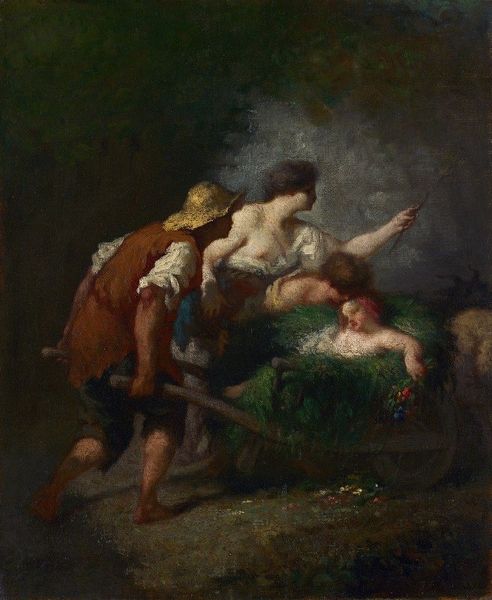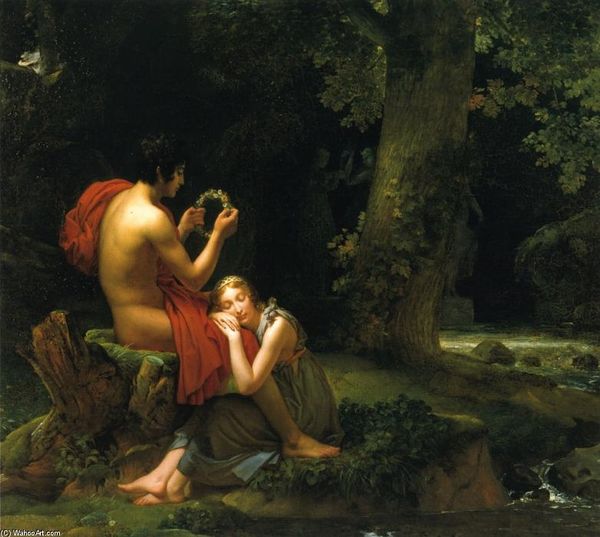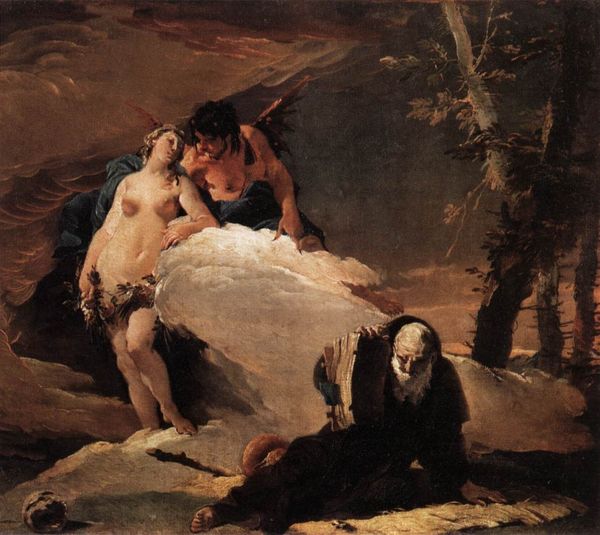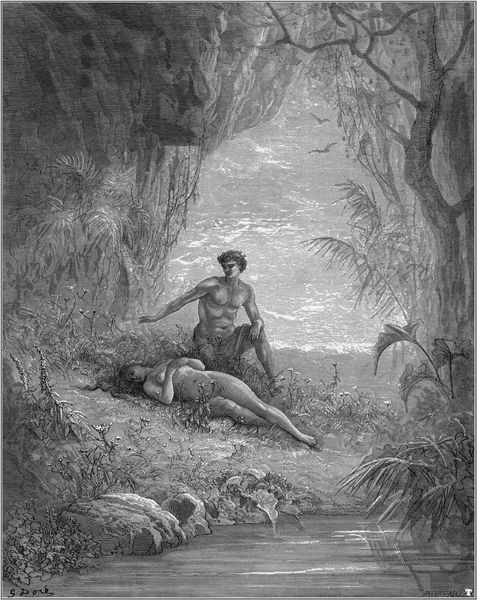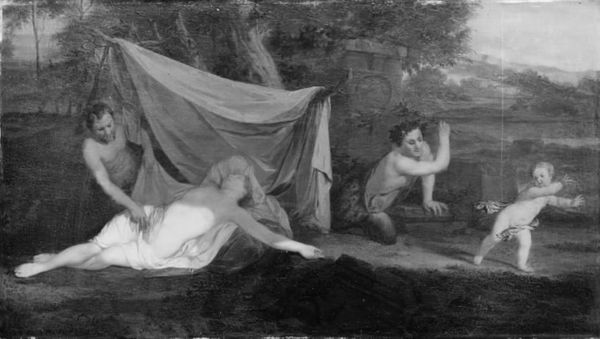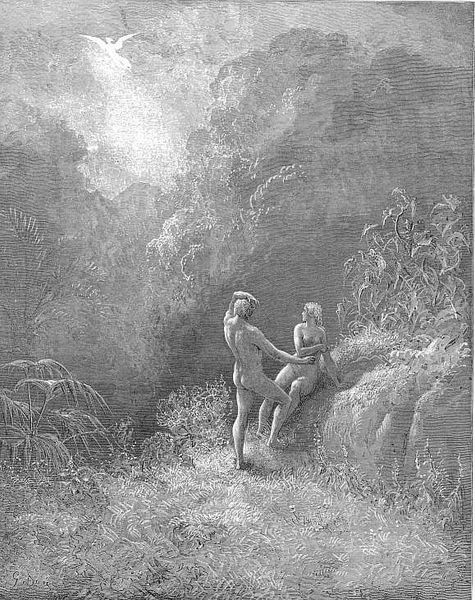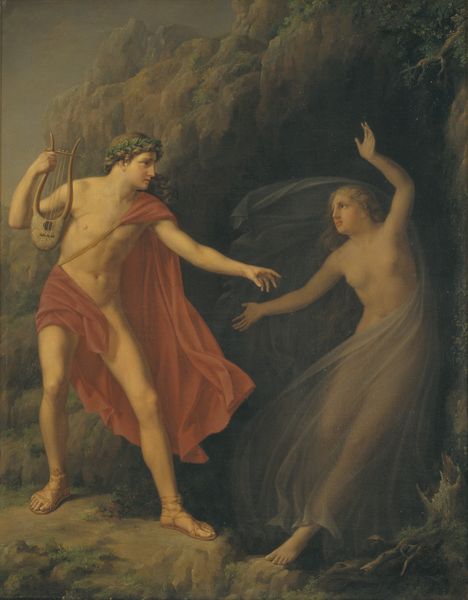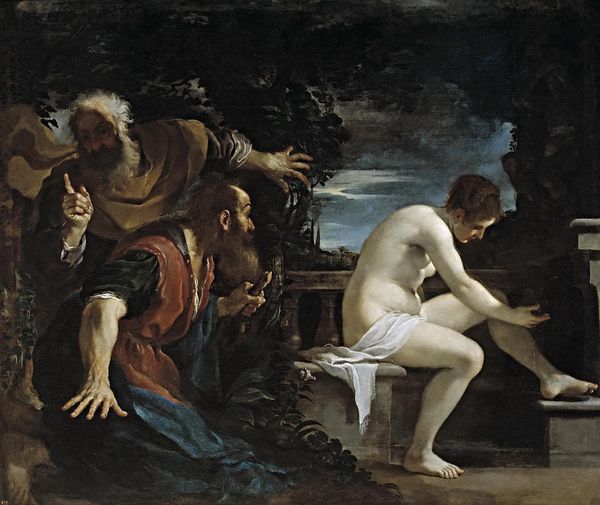
painting, oil-paint
#
allegory
#
baroque
#
painting
#
oil-paint
#
landscape
#
classical-realism
#
figuration
#
oil painting
#
history-painting
Copyright: Public domain
Nicolas Poussin painted "Midas at the Source of the River Pactolus" in the mid-17th century. The scene presents a study in contrasts, both in composition and tone. The painting is anchored by the strong diagonal formed by Midas and the river god, which divides the canvas between the darker, more chaotic left side, and the calmer, more ordered right. Poussin frames Midas as a figure of classical authority, draped in voluminous robes, his posture and expression suggesting detachment, almost indifference. In contrast, the river god kneels, his body rendered with dynamic energy and soft flesh tones, embodying a sense of desperation. The artist plays with light and shadow to accentuate these differences, highlighting the opulence of Midas’ garments against the river god's exposed form. The painting uses the symbolic language of myth to explore themes of power, redemption, and the consequences of unchecked desire. Poussin challenges us to look beyond the surface narrative, prompting questions about the nature of wealth, the dynamics of supplication, and the possibility of transformation.
Comments
No comments
Be the first to comment and join the conversation on the ultimate creative platform.
